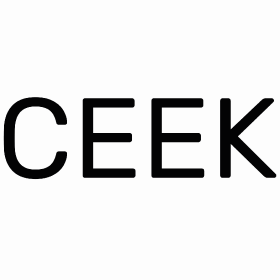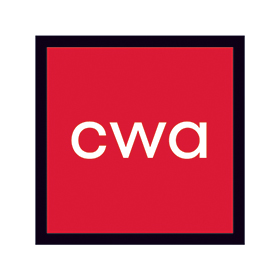We connect you with the best and most reliable agency partners for your projects. All DAN members are thoroughly vetted and ready to deliver exceptional results.

Featured Agencies
Prominent Travel & Tourism Marketing Agencies of UK
-
Creative Brand Design
An award-winning London Digital Agency, specialising in Digital Marketing Services, SEO Optimised Website Design and Bespoke Web Development.Services- Web Design
- Web Development
- UX Design
- SEO
- eCommerce
- Branding
- Creative
- Digital Strategy
Industries- Travel & Tourism
- Finance
- Automotive
- Hospitality
- Energy
- IT & Technology
- Telecommunications
- Gaming
Select a region, city and industry type to discover the best digital marketing agencies!
DAN Member Agencies
Providing Travel & Tourism Marketing Services in UK
All travel & tourism marketing agencies in the UK have been vetted and verified against the following criteria:
- Portfolio Quality
- Reliable Services
- Sectoral Expertise
- Team Transparency
If you have any feedback regarding the agencies, please contact us.
-
Harrison Carloss
HQ: Manchester+1 city- UK
- London
5.0The rating displayed is a weighted average derived from verified reviews across trusted platforms, further validated by the DAN team for agency authority.Gold MemberDon’t bring us the answer, just the problem. We're a strategy-led creative and digital agency with a passion for problem-solving.Services- Digital Strategy
- Software Development
- Creative
- B2B Marketing
- Marketing Automation
- Branding
- eCommerce
- PPC
- SEO
- UX Design
- Web Development
- Web Design
11-50 -
EchoGlobal
HQ: LondonStandard Member• We connect tech-oriented companies and startups with exceptional remote software developers across the world, focusing on talent from Eastern Europe.Services- Software Development
- Web Development
- Mobile App Development
11-50 -
Catch Digital
HQ: LondonStandard MemberCatch is a digital platform specialist. We focus on building exceptional digital experience platforms as we believe that with the right platform anything is possible.Services- Branding
- Creative
- Digital Product Design
- Digital Strategy
- eCommerce
- Email Marketing
- Mobile App Development
- SEO
- UX Design
- Video Production
- Web Development
11-50 -
ProfileTree
HQ: BelfastGold MemberCreates award-winning content campaigns through written word or video production. This is supported by SEO and Digital Strategy.Services- AI Marketing
- B2B Marketing
- Content Marketing
- Digital PR
- Digital Strategy
- eCommerce
- Inbound Marketing
- Marketing Automation
- SEO
- Video Production
- Web Design
- Web Development
11-50 -
UX Connections
HQ: London+2 cities- USA
- New York
- Australia
- Sydney
Gold MemberUX Connections, the UX agency with UX/UI consultants to help your digital product succeed. We provide specialised, flexible, on-site UX help to our clients.Services- Digital Product Design
- Mobile App Development
- Software Development
- UX Design
11-50 -
Series Eight
HQ: LondonStandard MemberWe’re a remote digital agency that creates award-winning websites, brands and e-commerce stores - for people.Services- Marketing Automation
- AI Marketing
- B2B Marketing
- Creative
- Online Advertising
- Digital Strategy
- Web Design
- Inbound Marketing
- Web Development
- UX Design
- PPC
- Influencer Marketing
- Email Marketing
- eCommerce
- Content Marketing
- Branding
11-50 -
Creative Brand Design
HQ: London5.0The rating displayed is a weighted average derived from verified reviews across trusted platforms, further validated by the DAN team for agency authority.Standard MemberAn award-winning London Digital Agency, specialising in Digital Marketing Services, SEO Optimised Website Design and Bespoke Web Development.Services- Web Design
- Web Development
- UX Design
- SEO
- eCommerce
- Branding
- Creative
- Digital Strategy
11-502 AwardsAgency of the MonthFeatured Agency -
Exceed
HQ: LeedsGold MemberWe're a team of performance marketing experts with a passion for creative paid media campaigns that generate profitable business growth.Services- PPC
- Online Advertising
2-101 Award -
Polar
HQ: London+2 cities- UK
- Essex
- USA
- Utah
4.9The rating displayed is a weighted average derived from verified reviews across trusted platforms, further validated by the DAN team for agency authority.Gold MemberCrafting brands, websites, and campaigns that envision your goals, capture your ethos, and make a difference. Get in touch today for a no-obligation consultation.Services- Branding
- Creative
- Crypto & NFT
- Web Design
2-102 Awards
Best Digital Marketing Agencies by Industries in UK
Explore the best digital marketing agencies in UK specializing in the industry you need
- Automotive Marketing Agencies in UK
- Beauty & Cosmetics Marketing Agencies in UK
- Digital Marketing Agencies in UK
- Education Marketing Agencies in UK
- Energy Marketing Agencies in UK
- Fashion & Retail Marketing Agencies in UK
- Finance Marketing Agencies in UK
- FMCG Marketing Agencies in UK
- Food & Beverage Marketing Agencies in UK
- Healthcare Marketing Agencies in UK
- Hospitality Marketing Agencies in UK
- Insurance Marketing Agencies in UK
- IT & Technology Marketing Agencies in UK
- Legal Marketing Agencies in UK
- Luxury Marketing Agencies in UK
- Media & Entertainment Marketing Agencies in UK
- Non-Profit Organization Marketing Agencies in UK
- Real Estate Marketing Agencies in UK
- Sports Marketing Agencies in UK
- Startup Marketing Agencies in UK
- Telecommunications Marketing Agencies in UK
- Wellness & Fitness Marketing Agencies in UK
How to Choose the Right Travel and Tourism Marketing Agency in UK?
Choosing the right travel digital marketing agency in UK to build or improve your marketing campaign is critical. But how can you know if you’re partnering with the right agency for your company?
You can start by asking to meet the people you’ll be working with at each agency you interview. Then ask for case studies to see how they’ve represented companies in your field. Your travel digital marketing agency’s marketing strategies and approach should be tailored to your target audience. Throughout the process, the best agencies analyze personas and buying stages for your target audience.
Then, it comes to reviewing your tourism marketing agency’s content development skills. Does it provide value while driving traffic to your website? You also may want to see if your digital marketing agency can track and comprehend performance data after they prove that they can create engaging content. Now you’re ready to boost your travel company’s online presence!
Free Listings
of Travel & Tourism Marketing Agencies in UK
-
RevWise
RevWise is an affiliate channel-management agency that grows, evolves, and manages your brand’s affiliate program.
HQ: Essex -
Submerge
Data-driven digital marketing agency delivering SEO, PPC, content and web solutions that boost visibility, engagement and ROI. Partner with us to grow our brand.
HQ: London -
Digitaloft
We’re proud to serve a stellar portfolio of clients across the UK and internationally, with the best digital strategies across SEO, Content and Digital PR.
HQ: Manchester
Articles and Case Studies on Travel & Tourism Marketing
Discover more travel & tourism articles on our blog!







































































